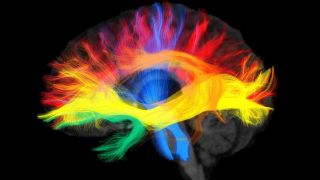Have you ever been to a store with an overwhelming amount of scent, lights, or sounds, and just wanted to shop fast and move on? Retailers know that store ambiance can make — or break — the shopping experience, depending on the demographic they seek to engage. Approximately 1 in 5 families have a neurodiverse child, making the shopping environment an important consideration.
-
Neurodiversity is the infinite range of brain function, from neurodivergent to neurotypical.
-
Approximately 1 in 5 families include a neurodivergent child or adult.
-
Retail stores are increasingly interested in supporting the needs of neurodivergent shoppers.
-
Supports include quiet hours, dedicated staff, and a holistic approach to the shopping experience.
Anyone who shopped in a mall during the early 2000s remembers the inescapable Abercrombie & Fitch branding strategy: the scent of cologne drifting out of the store, the beat of a hip soundtrack, and the sight of attractive models greeting customers. For a few years, the genius of this immersive brand strategy was apparent, as a generation of teen customers was drawn to the clothing line.
Today, the store is almost unrecognizable as its leadership responds to a vastly different marketplace, which demands inclusivity in its image, multiple channels to engage with the products, and frictionless purchasing via user-friendly apps. These branding shifts were in response to society’s demands that retailers be more diverse and inclusive. These changes also make the brick-and-mortar stores more accommodating to neurodivergent consumers.
What is neurodiversity?
The United Nations Convention on the Rights of Persons with Disabilities defines a person with a disability as “those who have long-term physical, mental, intellectual or sensory impairments in which interaction with various barriers may hinder their full and effective participation in society on an equal basis with others.”
Retailers are increasingly reaching out to nearly 1 in 5 consumers who are neurodiverse. Neurodiversity means the person’s brain works differently, due to a medical or mental health condition, injury, or congenital disorder. Those with a neurodivergent brain may have different needs and abilities than those with a neurotypical brain. One is not better than the other, and for many, their unique abilities are strengths and an important part of their identity.
Approximately 17% of children are diagnosed with a developmental disability, including approximately 8.5-9.5% (or nearly 1 in 10) with attention-deficit/hyperactivity disorder (ADHD), 1.1%-2.5% (or 1 in 44 children) with an autism spectrum disorder (ASD) and 0.9% to 1.2% with an intellectual disability. Those with sensory processing disorders, social anxiety, traumatic brain injury, and post-traumatic stress disorder (PTSD) also have neurodiverse needs. Altogether, approximately 1 in 5 people may be neurodiverse.
A continuum approach to providing support
While clinicians appreciate the clarity of clinical categories, there is a growing appreciation for the complexity of coexisting conditions and a continuum of symptoms. “This continuum approach holds great appeal in part because it maps well onto our intuitions about many symptoms,” according to Eigsti and Fein, coauthors of a recent article about losing the autism diagnosis in Frontiers in Psychiatry. “There does not appear to be a qualitative difference between momentary anxiety experienced under threat, vs. the daily anxiety experienced in an anxiety disorder.”
In other words, the proportion of the population with a specific diagnosis may represent only a fraction of those who experience symptoms with less severity, or who need less support to interact fully with their environment. Retailers who make accommodations in alignment with this continuum approach attract and retain customers. These stores make it possible for customers to enjoy the shopping experience in ways they may not have previously.
Personalization matters
As society begins to better appreciate neurodiversity, we can make adjustments to our environments — schools, stores, and workplaces — to better care for ourselves and those around us who have different needs. Some stores offer shopping hours that are quieter or provide dedicated staff to help, airports offer lounges, and AMC Theaters has offered Sensory Friendly Films for more than a decade. The non-profit Autism Speaks has partnered with a network of 68 malls and outlets to offer a sensory-friendly visit with Santa. The range of initiatives to support those with sensory needs has grown in the last decade as stores are competing for foot traffic with online retailers.
Even if the built environment is not tailored to those with neurodivergent needs, training the staff to appreciate the needs of customers is an important way to enable self-care. For instance, consumers with a hearing impairment appreciate knowing a staffer can communicate with American Sign Language. A parent may need assistance finding a product quickly because the atmosphere of the tech store with its 50 wide-screen televisions all displaying a different scene is causing sensory overload for their child.
Personalized service is an important way to communicate inclusivity, but an unwavering focus on the needs of the customer is also a smart business strategy.
Can experiential retailers be sensory-friendly?
An engaging, immersive experience is important for retailers to connect with today’s shoppers. These stores blend entertainment with shopping and allow consumers to try products, interact with staffers, customize their experience, and purchase at any point in the process without having to migrate to a checkout station.
Experiential retail stores also offer unobtrusive ways for consumers to share their experiences via social media. The primary goal is therefore not strictly sales — it is engagement. But can these sensory-intense experiences also be customized to the unique needs of neurodivergent shoppers?
Creating a more holistic experience for neurodivergent shoppers
Stores can offer appointments to avoid having to wait in long lines or navigate busy stores. They should also promote special services such as quiet hours, appointments, and dedicated staff assistance via multiple channels to reach consumers. In-store events can create a sense of community and provide an opportunity for those with similar needs to interact.
Being able to take delivery of the product through a variety of means – such as curbside pickup or delivery to their door – appeals to all customers but perhaps, particularly those needing support in navigating the in-person environment. If the name of the game today is omnichannel marketing – integrating all touchpoints in the customer’s journey seamlessly, from shopping online to visiting the store in person – then the future is bright for neurodiversity in retail.
Susanne Navas is a certified Life Coach and youth triathlon coach who has worked with neurodivergent kids and has sensory issues of her own, as does her son. “I consciously choose shopping experiences that feel calming and soothing, and avoid places that jar my senses, even if I have to pay a little more,” says Navas. “Some kids and adults enjoy highly stimulating experiences, but we are all somewhere on the continuum, and our tolerance can change. I’m glad to hear retailers are taking this into consideration.”
Source: Neurodiverse Shopping—Why Have Retailers Taken Notice? | HealthNews













